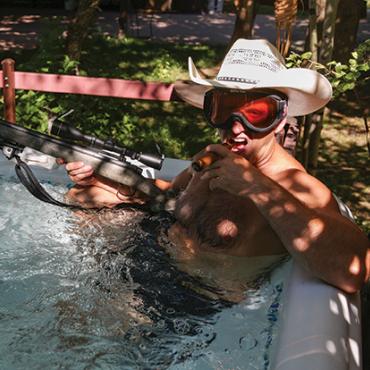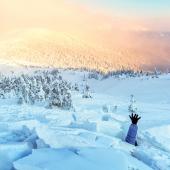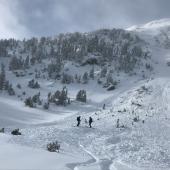Avalanche Avoidance
Taking the Level 1 Avalanche Safety course at the Yellowstone Forever Institute.
A thick fog shrouds the Lamar Valley as we stumble out of bed, wolf down a quick breakfast, and drag our ski gear to the parking lot. Sleepy-eyed and shivering in the brisk January air, we silently clamber into the vans and lean back for the 30-minute ride to Cooke City. It’s a mystical morning in Yellowstone: hoar frost coats the trees; mist rises off the rippling flow of Soda Butte Creek; and to either side, bull elk forage in snow-covered meadows. The fog dissipates in step with the advancing dawn. By the time we arrive in Cooke City, the morning has broken cold and clear.
We pile out of the vans, strapping our skis to the shuttle sled that will haul us into the hills for the day. Amid ten-foot snowdrifts and people sporting ski gear, it’s easy to forget why we’re here today. But one glance upward at the steep, snow-covered slopes offers a quick and poignant reminder: We don’t just want to ski the backcountry, we want to come back from it alive. With that thought etched indelibly into our minds, we load the alpine stagecoach for our first field day with the Yellowstone Forever Institute’s Level 1 Avalanche Safety course.
The course began two nights ago at the Buffalo Ranch, a live-in research station in the heart of the Lamar Valley. With stunning views of buffalo herds grazing along the Lamar River, we studied the basics of avalanche safety Thursday night and all day Friday. Our instructors, local avalanche experts Chris Lundy and Lance Riek, expertly delivered instruction on the fundamentals of snow science. Using a combination of lectures, slide presentations, and a comprehensive snow-safety book called Staying Alive in Avalanche Terrain, Chris and Lance managed to convey enough avalanche safety information in a day and a half to humble the most bravado-bound among us. Many of us had been to avalanche seminars before, but nothing this in-depth or that so clearly and effectively revealed the inherent dangers of the backcountry—and the importance of avalanche safety education in reducing the possibility of a tragic accident. By the time we retired to our cabins Friday night, we could barely wait to apply this newfound knowledge in the field.
From our drop-off point below Miller Ridge, about five miles from Cooke City, we take a short skin-trail through the trees, angling toward the ridgeline. The group splits; Chris takes our group to the north, looking for a good place to dig our snowpits. As we skin upward, he quizzes us about terrain, weather conditions, and snowpack: the Holy Trinity of avalanche hazard recognition. When we find a suitable spot—representative of both the snow quality and slope angle we’ll be skiing later—we pair up and begin to dig our pits.
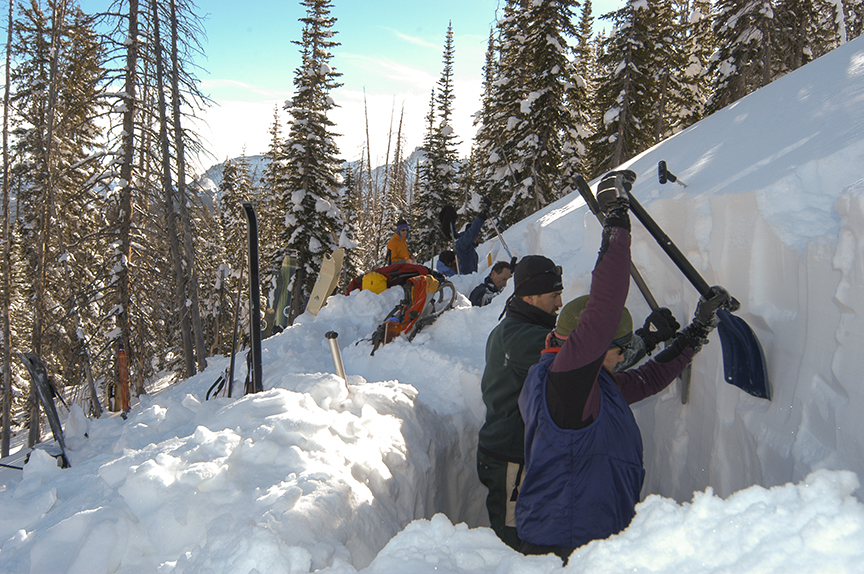
This is where our classroom training comes into play: attempting to identify, on the ground, the probability of a slide given appropriate force on the snowpack. We simulate that force using a variety of tests: the compression test, the stuff-block test, and the Rutschblock test. Chris works his way along the pit line, answering questions and demonstrating proper testing techniques. His knowledge of snow dynamics is amazing; one wonders how many hundreds of days he’s spent digging snowpits and skiing in the winter woods. It’s a reassuring thought—if he’s survived that many backcountry trips, there must be something to these tests.
Our group is an eclectic one: twenty-something ski bums from Jackson, Wyoming; middle-aged weekend warriors from Bozeman; Big Sky lifties on snowboards; old-school diehards with decades of backcountry experience under their belts. Some are here to prepare for their first backcountry trip; others want a refresher, something to help keep their skills sharp. But we all have one thing in common: we want to stay alive in the backcountry. This commonality, combined with our shared passion for skiing and the outdoors in general, makes for a comfortable group atmosphere. By the end of the first day, we’re yakking it up like old friends.
We spend the last day of the course a bit farther up the Miller Creek drainage, on an open slope below a sprawling cliff line. It’s search and rescue day, and the idea is to become proficient with our avalanche beacons and other rescue equipment. As Chris and Lance constantly remind us, digging snowpits is important but not fail-safe—the only way to eliminate all risk is to stay at home. To simulate realistic field conditions, Chris and Lance engineer various rescue scenarios, then turn us loose to play them out. As we scramble around the slope following our transceivers and probing the snow for buried victims, we immediately realize the importance of practice. For almost everyone, the first couple scenarios are total disasters—we can’t read our transceivers well, find our shovels, or assemble our probe poles fast enough.
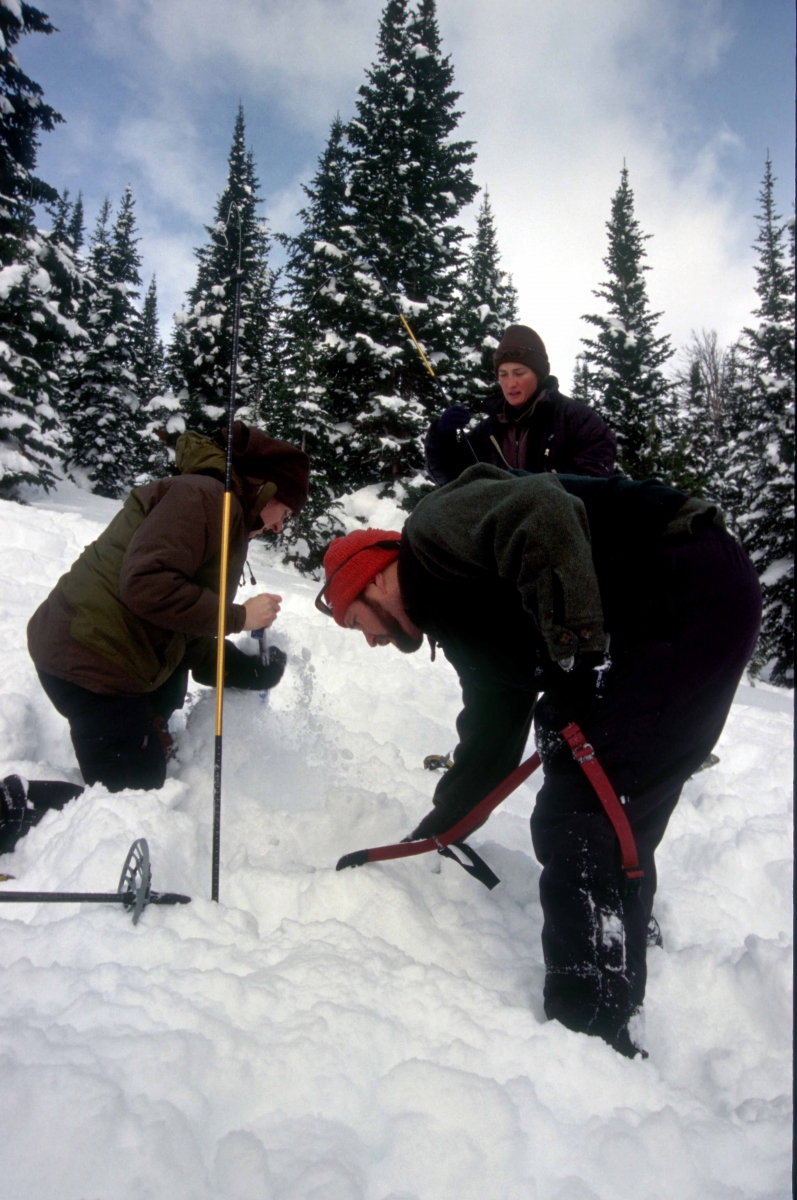
But after a few rounds, things start coming together. By the end of the day, we’re completely dialed in—pinpointing the signal, probing and making contact, and extracting the victim in less than two minutes. We look around at each other with pride and renewed confidence: these are the kinds of skills that will save someone’s life after an avalanche. Knowing our partners have those skills makes us comfortable skiing the backcountry with them, comfortable putting our lives in their hands. As Chris reminds us, echoing a recurrent theme of the course from day one, avalanche education isn’t designed just to save ourselves—it’s the best way to keep our skiing partners alive too.

